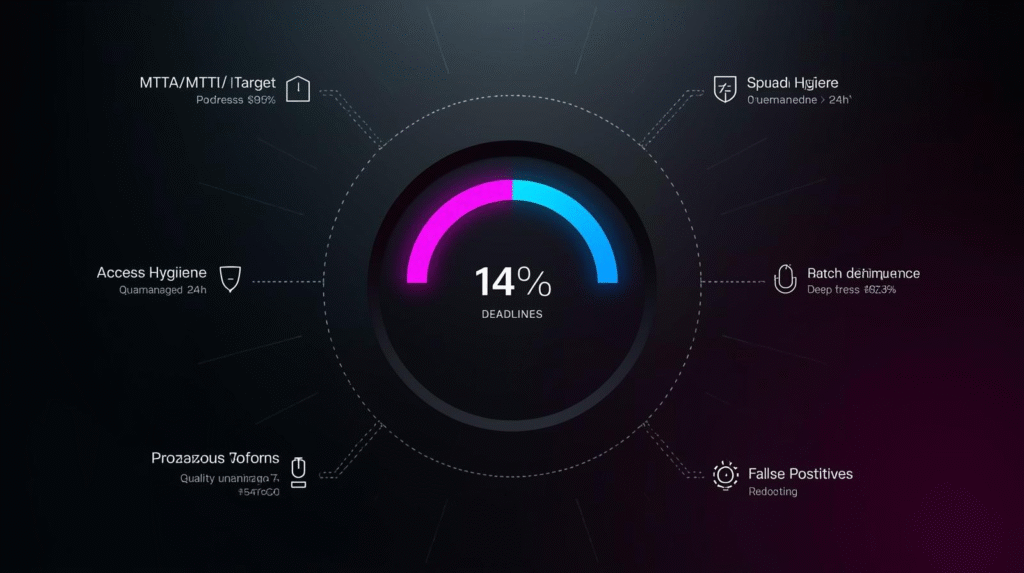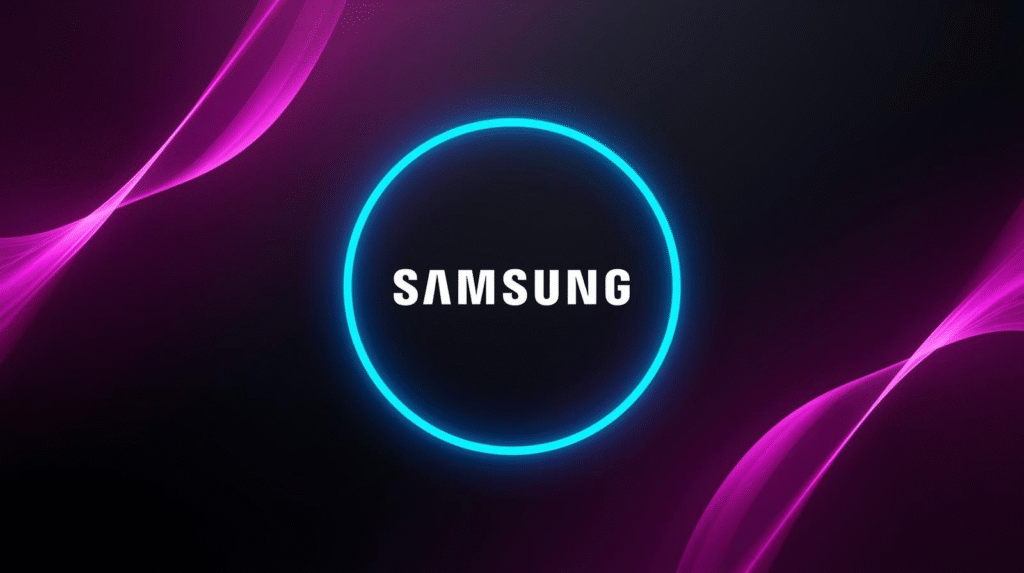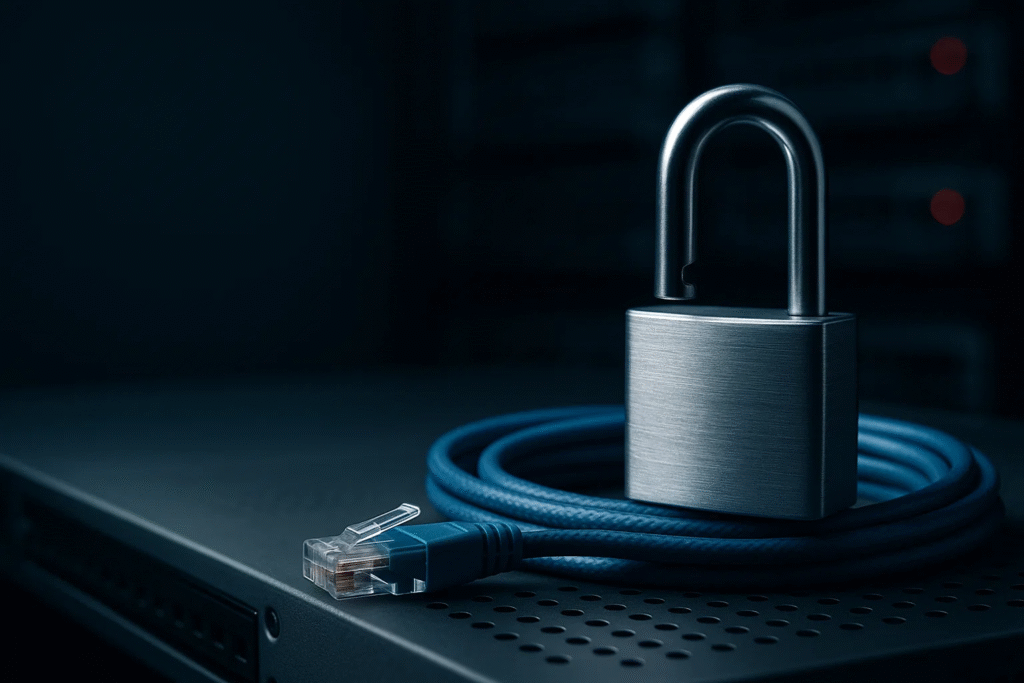Patch the Phone, Save the Business
CVE-2024-44068 zero-day targets Exynos. Prove patch compliance, block risky devices, and stop cameraserver abuse—this week.
What you have to Know
Google analysts observed active exploitation of CVE-2024-44068, a use-after-free flaw in Samsung’s m2m scaler driver for image and video processing. Mishandled memory lets attackers reinsert malicious data where the driver expects safe content, turning routine media handling into privileged code execution. Samsung released a fix in the October 2024 Security Maintenance Release, but exploitation began before broad deployment. That makes this a true zero-day with real-world victims, not a theoretical risk. Treat image pipelines as attack surface and assume exposure where patch levels are uncertain, especially in mixed corporate and BYOD fleets.
The affected Exynos chipsets include 9820, 9825, 980, 990, 850, and the wearable-focused W920. These power Galaxy S10/Note10 era phones, select A-series devices, and popular Galaxy Watch models still common in Canadian SMBs. Reports show payloads running inside the privileged cameraserver process, followed by process renaming to mimic a legitimate camera provider. That anti-forensics step evades casual checks and simplistic monitoring. The severity aligns with a high-impact elevation-of-privilege bug in a widely deployed component. Bottom line: a mundane media path became a shortcut to higher privileges. If your users handle images via chat, social apps, or email, the processing pipeline is a feasible trigger. Patch, verify, and monitor accordingly.
Why Canadian SMBs should care
Phones now hold email, chat, CRM, accounting, files, e-signing, and MFA prompts. A privileged foothold on one device can cascade into credential theft, session hijacking, and data exfiltration from cloud suites. Stolen tokens enable lateral movement into SaaS and on-prem via VPN profiles and synced credentials. This follows the modern playbook: exploit a mobile zero-day, harvest identity, then pivot into business systems. The stealthy cameraserver abuse and process masquerading raise the odds of lingering compromise on unmanaged devices. If you can’t prove patch status, assume risk and move to containment and verification.
Compliance pressure is real. Under PIPEDA and Quebec Law 25, running known-vulnerable devices after a fix exists invites scrutiny from auditors, clients, and insurers. Many insurers view delayed patching of actively exploited flaws as a governance failure that affects premiums and claims. Executives, finance, and IT administrators carry outsized risk because of elevated access and sensitive workflows. Your best defense is simple: rapid patching, management enrollment, posture-based access, and behavior-aware monitoring. Make these table stakes, not future projects. Evidence of action matters during renewals and after incidents.
What we know so far (technical snapshot)
CVE-2024-44068 is a use-after-free in the m2m scaler driver. Freeing memory and then referencing it lets attackers reallocate that region with controlled content. In media stacks, those primitives commonly become arbitrary code execution or reliable privilege escalation. The impacted Exynos family spans 9820, 9825, 980, 990, 850, and W920, covering phones and wearables still active in many fleets. Inventory gaps often hide true exposure, especially where device models vary by chipset across regions.
Observed tradecraft places payloads inside the privileged cameraserver, then renames the compromised process to resemble a legitimate camera provider. That frustrates naive detections and quick manual reviews. Severity is high, consistent with a path to privileged execution that attackers can chain for persistence. Status: Samsung shipped the fix in October 2024; opportunistic actors will scan for stragglers for months. Defender takeaway: instrument media paths, enforce rapid patch SLAs, and hunt for cameraserver anomalies and process masquerading.

Do these Today
Immediate actions
Patch all affected Samsung devices to October 2024 SMR or later. Verify on device and document evidence. Prioritize executives, finance, IT admins, and devices accessing consoles, banking, or payment systems. Keep reports, exceptions, and expiry dates for waivers; evidence supports audits and insurance discussions. Make the standard visible: no device more than thirty days behind on security updates, with critical updates applied in seven days.
Find and fix the glass house of unmanaged and BYOD devices. Cross-reference management inventory with identity sign-in logs to locate un-enrolled devices accessing mail or files. Enforce a simple rule through conditional access: no patch, no access. Restrict camera and media permissions where unnecessary, block unknown sources and sideloading, and reduce auto-processing in risky apps for high-target roles. Deploy mobile threat detection that flags cameraserver privilege spikes, process renames, and suspicious inter-process activity. Update policy and training: critical in seven days, high in fourteen; no sideloading; report odd behavior immediately. Add mobile steps to incident response: isolation, evidence collection, and token revocation.
Building resilience (next 90 days)
Unify control with a modern MDM or EMM. Enforce minimum OS levels, encryption, and strong lock screens. Build dynamic groups to target Samsung and Exynos devices for urgent policies and reporting. Replace ad-hoc outreach with repeatable hygiene and transparent exceptions. Visibility plus automation reduces mean time to remediate and improves accountability across teams.
Layer mobile defenses like you do for laptops. Combine OS patching, app vetting, DNS filtering, and per-app VPN for sensitive workloads. Apply zero trust: require compliant device posture and strong identity before granting access. Add behavior analytics that detect cameraserver anomalies and process masquerading. Signature-only approaches miss novel techniques and anti-forensics steps.
Ensure 24×7 monitoring and incident response that includes mobile telemetry. Build playbooks to isolate a handset over the air, collect relevant artifacts, rotate credentials, invalidate OAuth sessions, and notify data owners. Run a tabletop to validate detection-to-containment. Pair device posture with MFA, shorten admin session lifetimes, and require step-up authentication for finance functions. Archive compliance exports, blocked-device lists, training acknowledgements, and tabletop notes to demonstrate diligence.
What “good” looks like (checkpoint list)
Patching and configuration reach complete coverage: all Samsung and Exynos devices show October 2024 SMR or newer, with none more than thirty days behind. Baselines enforce encryption, modern screen locks, and no sideloading. High-risk roles operate under stricter profiles that limit camera and media permissions to documented needs and reduce unnecessary auto-processing paths.
Monitoring and detections run in real time and focus on behavior. Operations receives mobile alerts alongside endpoint alerts. Custom rules catch cameraserver privilege anomalies, process renames that mimic camera providers, and suspicious binder or inter-process patterns. These indicators align with observed exploitation and close gaps left by signatures.
Access control is uncompromising. Conditional access blocks unmanaged or non-compliant devices from cloud services. Exceptions require executive approval, compensating controls, and time-boxed waivers. Admin and finance apps enforce step-up authentication and shorter sessions to blunt token abuse.
Incident response readiness includes mobile: triage, evidence capture, isolation, token revocation, and communication templates. A recent tabletop validated roles and timing. Compliance evidence is easy to produce: dated patch reports, lists of blocked devices, and user training records. If you can’t meet all targets now, focus this week on patching, blocking unmanaged access, and enabling behavior-based detections.
Executive TL;DR and risk matrix
TL;DR: Actively exploited zero-day in Samsung Exynos image processing enables privileged execution. Patch immediately, enroll every device, gate access on posture, and monitor behaviors, not just signatures. Expect opportunistic scanning for months.
Risk matrix: Likelihood is high for unpatched devices due to active exploitation and common attack paths. Impact is high because privilege escalation on mobile enables credential theft, data exfiltration, and lateral movement into cloud systems. Residual risk after patching is moderate and drops further with MDM enforcement, conditional access, and behavioral detection. Business outcome: reduced breach likelihood, faster audits, and stronger insurance defensibility through evidence of controls and timely remediation.

Patch verification steps
On device: open Settings, tap Software update, and confirm the Security patch level shows October 2024 or later. Note the build number, kernel date, and model identifier; save a screenshot for audit. If the update is unavailable, check battery level, storage, and Wi-Fi, then retry. If a carrier-staged rollout delays availability, mark the device noncompliant and restrict access until the update lands. For fleets: in your MDM/EMM, create a dynamic group where Platform = Android and SecurityPatch < 2024-10. Target that group with a forced update profile, a compliance policy that sets “Require security patch ≥ Oct-2024,” and a conditional access block for email, files, and admin portals until compliant.
Export a dated compliance report (device, user, patch level, last check-in, enforcement action), attach screenshots, and file it with the change ticket. For wearables on W920, confirm the companion app shows watch firmware at or beyond the October 2024 baseline. Recheck at day 7 and day 30 to sweep up late adopters. Communicate status daily to stakeholders: percent compliant, devices blocked, and ETA to green. Provide an exception path only for mission-critical roles, with compensating controls (temporary VDI only, no local data) and a firm expiry.
Chipset-to-models quick map
Use this as directional guidance—always verify the actual chipset from device telemetry, not retail names. Exynos 9820 is common in Galaxy S10 family. Exynos 9825 appears in Note10 lines. Exynos 980 and 990 show in select A-series and regional flagships. Exynos 850 spans several budget and midrange Galaxy A models. Exynos W920 powers multiple Galaxy Watch generations. Because Samsung and other OEMs sometimes dual-source models, the same retail SKU can differ by market. Practical method: surface ro.product.board, ro.hardware, and ro.build.version.security_patch via MDM inventory or a device-side diagnostic.
Build dynamic tags such as chipset=exynos9820 AND patch<2024-10 to auto-group at risk devices. Maintain a living table mapping model → possible chipsets → minimum safe patch. Add a column for “business criticality” (exec, finance, IT admin) and “retirement horizon.” Treat ambiguous devices as in scope until proven patched. For procurement, request declarations of chipset families and guaranteed patch cadences; for legacy devices nearing end-of-life, plan replacement or enforce restricted access profiles that limit data exposure until they roll off.
Detection content (paste-ready)
Behavioral rules: alert if a process with name containing “cameraserver” or “camera.provider” gains elevated privileges within five minutes of a media event. Alert on process rename where the new name resembles a camera provider service but the binary hash, signing info, or path is unfamiliar. Flag three or more media pipeline crashes (e.g., codec/scaler faults) followed by a privileged process spawn within two minutes. Hunt for devices where camera-related services restart more than three times in an hour or where SELinux logs show repeated denials tied to media drivers. Example logic (adapt to your platform):
- • IF process_name CONTAINS “cameraserver” AND prior_priv != current_priv THEN HIGH.
- • IF new_process_name MATCHES /(vendor.samsung.hardware.camera.provider.)/ AND signer != “expected” THEN HIGH.
- • IF crash_count(media) >= 3 AND spawn(privileged_proc) WITHIN 120s THEN HIGH.
Triage and response: immediately quarantine the device from corporate apps and networks. Collect logs (system, events, radio), process lists, package inventory, app signing details, and OAuth/refresh tokens used by corporate apps. Pull MDM/attestation status and evaluate integrity flags. Rotate credentials, revoke OAuth sessions, and invalidate push notification registrations. Require a clean bill of health: device reboots, patch verified, scans clean, tokens re-issued, and user retrained. Post-incident: add an allowlist of legitimate camera provider binaries and tighten alerting on deviations; tune thresholds to reduce false positives from legitimate camera updates. Document timeline, indicators, actions, and outcomes for audit and insurer evidence.
Policy language snippets
Scope: all corporate-owned and BYOD Android devices accessing company email, files, messaging, finance tools, developer resources, or admin consoles. Standards: devices must maintain the current security patch baseline (October 2024 or newer for Samsung/Exynos). Encryption, screen lock, and automatic updates are mandatory. Sideloading is prohibited unless a written exception exists with compensating controls.
Access control: devices not meeting baseline are automatically blocked from corporate services until compliant; emergency exceptions require executive approval, documented business justification, risk acceptance, and a hard expiry. BYOD: enrollment in the approved MDM/EMM, device attestation where supported, and separation of work/personal data via work profiles are required. Monitoring: the organization collects minimal mobile telemetry necessary to protect corporate data and meet compliance obligations; data use is limited to security purposes. User responsibilities: install updates promptly, do not bypass prompts, report unusual behavior immediately, and protect devices from loss.
Enforcement: violations may result in access revocation, incident review, and disciplinary action as per company policy. Retention: telemetry and compliance artifacts are retained per the records schedule to support audits, legal, and insurance needs. Vendor and contractor devices must meet the same baseline before access is granted.

KPIs and deadlines
Time-boxed goals drive outcomes. Seven-day target: 95% of Samsung/Exynos devices at October 2024 SMR or newer; fourteen-day target: 100% or documented exceptions with expiry and compensating controls. Access hygiene: zero unmanaged devices accessing corporate resources after 24 hours of detection. Speed metrics: mean time to acknowledge mobile alerts (MTTA) under 10 minutes; mean time to isolate a suspect device (MTTI) under 30 minutes business hours and under 60 minutes after hours; mean time to remediate (MTTR) critical updates under seven days.
Quality metrics: median patch age ≤ 15 days; quarantined device dwell time ≤ 24 hours; false positive rate on cameraserver alerts < 5% after tuning. Coverage metrics: enrollment rate ≥ 98%; percentage of devices with behavior analytics enabled ≥ 95%. Reporting: weekly snapshot to executives showing compliance trend, top blockers, and forecast to green; monthly tabletop validation of mobile IR with action items tracked to closure. Red-Amber-Green thresholds clarify urgency and unlock support when targets slip.
Compliance notes for Canada
Assess whether personal information was, or may have been, accessed. If yes, evaluate breach notification triggers under applicable Canadian privacy laws, including federal private-sector obligations and provincial requirements such as Quebec’s Law 25. Maintain a contemporaneous record: detection time, investigation steps, decision rationale, and notifications made. Log which mobile controls were active (patch baseline, MDM enrollment, conditional access) and gather proof (reports, screenshots, tickets).
Coordinate with privacy counsel to preserve privilege over legal analysis, and prepare bilingual communications where appropriate. Keep a ledger of noncompliant devices blocked from access, including remediation timestamps, to demonstrate reasonable safeguards. Validate contracts and data-processing terms with your MDM/EMM and security vendors, confirming data residency options and retention periods. After containment, run a lessons-learned session focused on patch timeliness, BYOD governance, logging sufficiency, and user awareness. Close the loop with updated policies, targeted training, and a refreshed risk assessment that reflects the incident and the improvements made.
Final Thoughts
Mobile remains the easiest door to your cloud data if it isn’t governed with discipline. This flaw lived in image processing yet delivered privileged execution inside a core service—exactly the kind of foothold attackers monetize. The solution is not exotic: know every device, enforce timely updates, gate access on posture and identity, and watch for behaviors that betray abuse.
Do this, and you gain more than security; you gain audit-ready evidence, insurer confidence, and a calmer operations tempo. If you lack capacity, start with the highest-leverage moves: auto-group at-risk devices, block access until patched, and light up behavior analytics around cameraserver events. From there, bake the gains into policy, metrics, and budgets so the improvements stick. When the next mobile zero-day drops, you’ll be measuring hours to safe, not weeks to catch-up.
Featured links:
Security Awareness Training Guide
24/7 Managed Detection & Response
FAQ:
Are only older Samsung models affected?
Not necessarily. The risk tracks to specific Exynos chipsets (9820/9825/980/990/850, W920). Some are in older flagships and A-series devices still in service, plus wearables. Verify security patch level (October 2024+) on every device.
We don’t sideload apps—are we safe?
Sideloading isn’t required. The flaw lives in image/video processing; routine content handling can trigger exploitation. Patch immediately, enforce MDM, and monitor for cameraserver anomalies and process masquerading to reduce residual risk.
What’s the fastest enterprise fix path?
Create MDM smart groups for Android devices with security patch < 2024-10, force updates, and block non-compliant access via conditional access. Prioritise execs/finance/admins; keep dated compliance reports for audit and insurance evidence.
How do we prove due diligence in Canada?
Maintain logs showing patch rollouts, BYOD enrollment, conditional access blocks, and training acknowledgements. Map actions to privacy obligations (PIPEDA, Quebec Law 25) and keep bilingual client notifications ready if personal information may be implicated.

SITUATION
Mobile devices now gate access to cloud data and identities.
COMPLICATION
CVE-2024-44068 lets attackers escalate privileges via image processing on Samsung Exynos devices, with in-the-wild exploitation.
QUESTION
How can SMBs cut risk fast and satisfy compliance and insurance expectations?
ANSWER
Enforce MDM, patch to October 2024 SMR+, gate access on device posture, and monitor for cameraserver anomalies and process masquerading—backed by 24/7 MDR and documented evidence for audits.
Our Cybersecurity Guarantee
“At Fusion Cyber Group, we align our interests with yours.“
Unlike many providers who profit from lengthy, expensive breach clean-ups, our goal is simple: stop threats before they start and stand with you if one ever gets through.
That’s why we offer a cybersecurity guarantee: in the very unlikely event that a breach gets through our multi-layered, 24/7 monitored defenses, we will handle all:
threat containment,
incident response,
remediation,
eradication,
and business recovery—at no cost to you.
Ready to strengthen your cybersecurity defenses? Contact us today for your FREE network assessment and take the first step towards safeguarding your business from cyber threats!






















































































